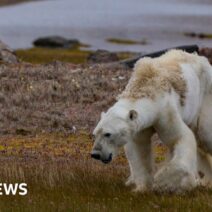Kinetic energy and angular momentum are fundamental concepts in physics that describe different aspects of motion. Kinetic energy pertains to the energy an object possesses due to its motion, while angular momentum relates to the rotational motion of an object. Understanding the interplay between these two forms of energy is essential in various scientific and engineering fields. One intriguing question that arises is whether kinetic energy is conserved when angular momentum is conserved. This inquiry invites a deeper exploration into the nature of these physical quantities and the underlying principles governing them.
To delve into this question, it is pivotal to establish the definitions and principles governing kinetic energy and angular momentum. Kinetic energy (KE) can be defined mathematically as KE = 1/2 mv², where m represents mass and v represents linear velocity. In contrast, angular momentum (L) for a particle is quantifiable through the equation L = r × p, where r is the radius vector from the pivot point to the particle and p is the linear momentum (p = mv). For a rotating object, angular momentum can also be expressed as L = Iω, where I is the moment of inertia and ω is the angular velocity.
A critical aspect of these principles is their conservation under certain conditions. The law of conservation of angular momentum asserts that if no external torques act on a system, the total angular momentum remains constant. This principle is vividly observable in systems like ice skaters who are able to spin faster by pulling their arms inwards, thus reducing their moment of inertia while conserving angular momentum.
However, kinetic energy does not share the same conservation status under all circumstances. The conservation of kinetic energy is contingent upon the type of collision or interaction taking place. In elastic collisions, both kinetic energy and momentum are conserved. However, in inelastic collisions, while momentum is conserved, kinetic energy is not, as some energy is converted to other forms, such as thermal energy or sound. This distinction plays a crucial role when examining scenarios where both angular momentum and kinetic energy are at play.
Consider a closed system consisting of two objects engaging in a rotational collision, such as two figure skaters spinning and colliding on an ice rink. If they collide perfectly elastically, both momentum and kinetic energy are conserved. This scenario allows physicists to establish relationships between initial and final velocities and to predict the outcomes of their interactions. However, if they collide inelastically, angular momentum remains conserved, but the kinetic energy will decrease due to the dissipation of energy into non-mechanical forms.
The complexity increases when considering systems with multiple components or varying masses. For instance, a rotating disc colliding with a stationary object can exhibit conservation of angular momentum while losing kinetic energy through frictional forces and deformation. This disparity between conservation laws often captivates scientists and engineers, prompting inquiries into energy transfer mechanisms and the efficiency of rotational systems.
Furthermore, concepts such as gyroscopic motion and precession further illustrate this relationship between angular momentum and kinetic energy. A gyroscope, when subjected to torque, demonstrates interesting behaviors while conserving angular momentum. As it rotates, there may be a transformation of kinetic energy between rotational axes. This interplay elucidates deeper physical laws, revealing fascinating facets of rotational dynamics.
The exploration of kinetic energy and angular momentum is not limited to theoretical principles; it has far-reaching implications in engineering, astronomy, and technology. Understanding these conservation laws can enhance the design of efficient mechanical systems, such as flywheels and turbines, which harness rotational kinetic energy for energy storage and conversion. The interplay also plays a pivotal role in astrophysics, particularly regarding the dynamics of celestial bodies and the evolution of galaxies, where rotating systems undergo intricate interactions governed by these fundamental principles.
Moreover, the implications extend to environmental engineering and sustainable practices. Optimizing kinetic and angular conditions in systems like wind turbines or water wheels increases their efficiency and effectiveness as renewable energy sources. The quest for improved conservation strategies underscores the necessity of comprehending the nuances of energy conservation in mechanical systems, bridging the gap between theoretical physics and practical application.
As we dissect the interplay between kinetic energy and angular momentum, a fascinating dichotomy emerges: while angular momentum conservation holds firm under an array of conditions, kinetic energy conservation presents a more variable landscape, reliant on the nature of interactions involved. This observation not only invites deeper study but also highlights the ingenuity of nature’s mechanisms, beckoning further exploration into the synthesis of energy forms and the optimization of mechanical designs.
In summation, understanding whether kinetic energy is conserved when angular momentum is conserved requires a nuanced consideration of the conditions prevalent within a given system. The interplay between these physical concepts evokes curiosity and drives innovation across various scientific domains. It teaches a fundamental lesson about the complexity of energy conservation—a lesson that is especially salient in our current quest for sustainable energy solutions. Through meticulous observation, experimentation, and analysis, the intricate dance of kinetic energy and angular momentum continues to evolve, enriching both our scientific knowledge and our ability to harness energy more sustainably.







